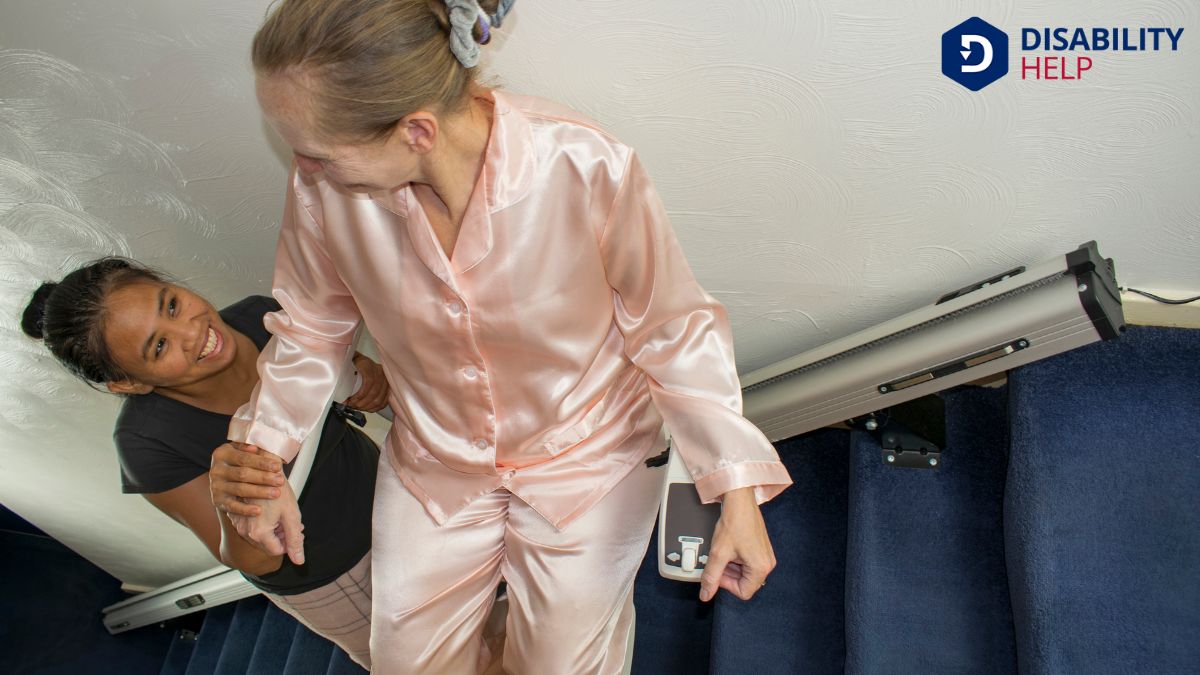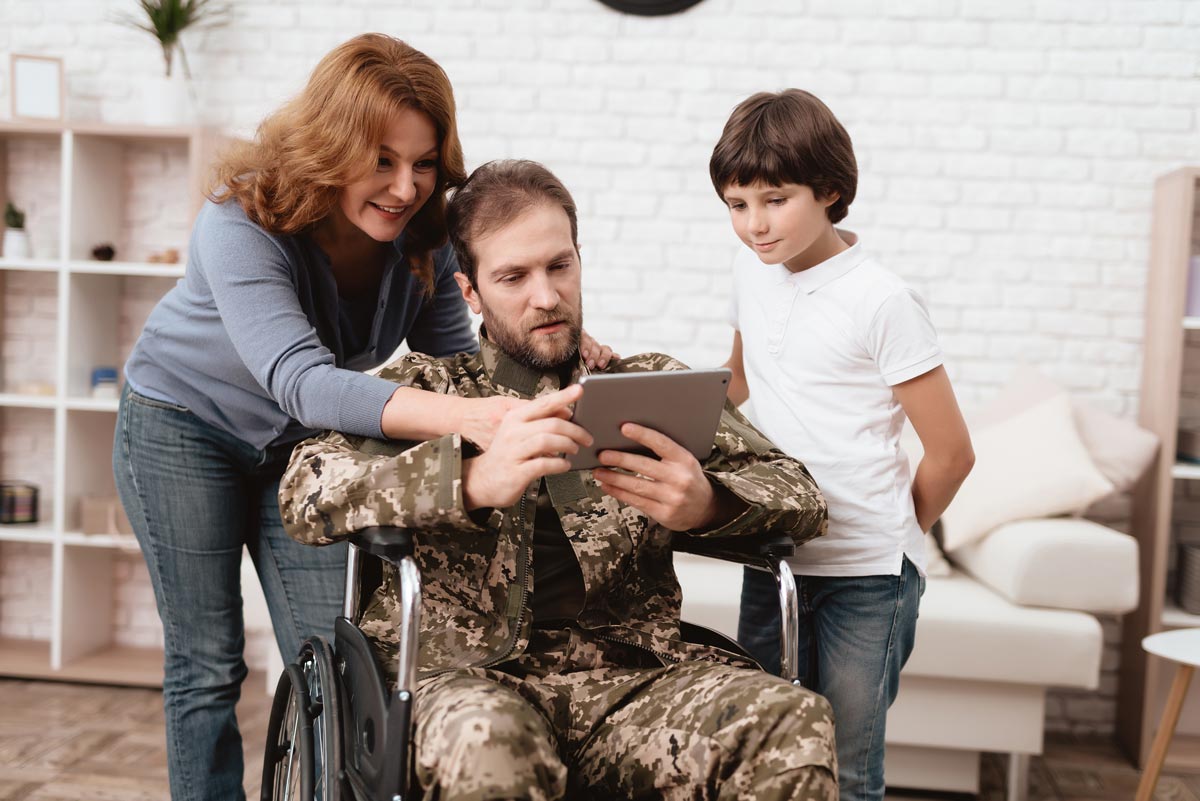Let's explore whether MedicareA U.S. federal health insurance program for people aged 65 and older, and for some younger people wi... covers stair lifts. These devices can greatly improve safety and independence for seniors, but understanding what Medicare includes is essential. We'll examine the specifics of Medicare coverage, including the role of Medicare Part B and whether stair lifts qualify as durable medical equipment (DME). We'll also consider alternative funding options that might be available. Curious to find out more?
Key Takeaways
- Medicare does not cover stair lifts as they are considered home modifications, not medically necessary equipment.
- Stair lifts are classified as convenience items and do not meet Medicare's durable medical equipment criteria.
- Medicare Part B focuses on medical devices used primarily in the home, excluding stair lifts.
- Medicare Advantage Plans might offer additional benefits, including stair lifts, depending on the specific plan.
- Alternative funding sources for stair lifts include local government programs, nonprofit organizations, and state MedicaidA U.S. government program that provides health coverage to eligible low-income individuals, includin... waivers.
Understanding Medicare Coverage Basics

Understanding Medicare coverage basics is essential for maneuvering your health plan effectively. We need to know that Medicare is divided into different parts, each covering specific services.
Medicare Part A covers hospital stays, skilled nursing facility care, and some home health careMedical services provided in a patient’s home, often for individuals with chronic conditions or di.... Part B includes outpatient care, doctor visits, and preventive services.
It’s important to recognize that while Medicare provides broad coverage, it doesn’t pay for everything. We must also grasp that Medicare has its limitations and exclusions.
For instance, it typically doesn’t cover most dental care, eye exams, or hearing aids. Knowing these details helps us make informed decisions about our healthcare options.
The Importance of Home Modifications for Seniors
Let’s consider how home modifications can make a difference in the lives of seniors.
By enhancing mobility within their homes, we can greatly reduce the risk of falls and promote independence.
It’s essential that we explore practical solutions to create safer living environments for our loved ones.
Enhancing Senior Mobility
As we age, maneuvering our homes can become increasingly challenging, highlighting the vital need for modifications that enhance senior mobility.
These changes help us maintain our independence, guaranteeing we stay safe and comfortable in our cherished spaces.
Let's explore some practical modifications:
- Stair Lifts: These devices offer a secure way to navigate stairs, reducing the strain on our bodies and providing peace of mind.
- Grab BarsBars installed in bathrooms or other areas to provide support and prevent falls for those with mobil...: Installing grab bars in essential areas like bathrooms guarantees stability and support during daily activities.
- Wider Doorways: Adjusting doorways to accommodate mobility aidsDevices designed to help individuals move around more easily, such as canes, walkers, or wheelchairs... like walkers or wheelchairs allows for smoother shifts from room to room.
Reducing Fall Risks
Although falls are a common concern for seniors, we can greatly reduce these risks with strategic home modifications. By focusing on key areas like stairways, bathrooms, and lighting, we make homes safer for our loved ones.
Installing stair lifts isn't just about convenience; it’s an important step in preventing accidents. In bathrooms, grab bars and non-slip mats provide stability. Good lighting minimizes hazards by enhancing visibility throughout the house.
Let’s not overlook clutter; keeping pathways clear reduces trip risks considerably.
These modifications aren’t just practical; they’re vital for maintaining independence. By making these changes, we create a safer environment that supports aging in placeThe ability to live independently and safely in one's home as one ages, often with support services.....
It’s our responsibility to guarantee safety and comfort for those we care about. Together, we can make a difference.
Stair Lifts: A Valuable Tool for Mobility
Let's explore how stair lifts can enhance home accessibilityThe design of products, devices, services, or environments to be usable by people with disabilities...., providing safety and independence for those of us with mobility challenges.
We’ll look at the different types available and discuss installation options to suit various needs.
Enhancing Home Accessibility
When it comes to enhancing home accessibility, stair lifts prove to be an invaluable tool for improving mobility and independence. They transform our living spaces, enabling us to navigate multi-level homes with ease.
By installing a stair lift, we can make our homes more accommodating and safe, not just for ourselves, but also for our loved ones.
- Ease of Installation: Stair lifts can be installed quickly, often without requiring major modifications to our homes.
- Space Efficiency: These lifts are designed to fold away when not in use, ensuring that the staircase remains accessible.
- Cost-Effectiveness: Compared to the expense of relocating or renovating a home, a stair lift provides a budget-friendly solution.
With these benefits, stair lifts can greatly enhance our daily living experience.
Safety and Independence Benefits
Safety and independence—two pillars of a fulfilling life—are greatly boosted with the installation of stair lifts in our homes. By eliminating the risk of falls on stairs, stair lifts provide a secure way for us to navigate multi-level homes.
This security means we can maintain our independence, continuing to live in our beloved spaces without the constant worry of accidents.
Stair lifts empower us by reducing reliance on others for daily tasks. We gain peace of mind knowing that each trip up or down the stairs is safe and manageable.
This not only enhances our physical safety but also positively impacts our emotional well-being. In this way, stair lifts are more than just mobility aids; they're a step toward preserving our quality of life.
Types and Installation Options
Stair lifts not only boost our safety and independence but also offer a variety of types and installation options to meet diverse needs.
Let's explore the different choices available to us, ensuring we find the perfect fit for our homes.
- Straight Stair Lifts: Ideal for staircases without curves, these are the most straightforward and cost-effective option.
- Curved Stair Lifts: Custom-built to navigate bends and landings, they provide seamless travel on complex staircases.
- Outdoor Stair Lifts: Designed to withstand the elements, they offer safe outdoor access, whether it's for a porch or garden stairs.
When considering a stair lift, we must evaluate our specific staircase type and environment.
Each option addresses unique challenges, ensuring we maintain mobility and convenience at home.
What Medicare Typically Covers
While many of us might assume that Medicare covers a wide range of medical equipment, it’s important to note that its coverage is actually more specific.
Medicare primarily focuses on items deemed “medically necessary” for treating or managing a health condition. Generally, Medicare covers services and supplies that fall under hospital insurance (Part A) or medical insurance (Part B).
This includes hospital stays, skilled nursing facility care, and some home health services under Part A. Under Part B, it covers doctor visits, outpatient care, preventive services, and certain medical equipment.
However, it’s essential for us to understand that Medicare doesn't cover everything. Many items that improve quality of life but aren't strictly medical necessities mightn't be covered, which can include stair lifts.
Examining Medicare Part B and DME
Let's explore how Medicare Part B handles coverage when it comes to durable medical equipment (DME) and see what that means for stair lifts.
While Part B may cover certain DME, stair lifts often face specific limitations under these criteria.
Together, we'll understand the eligibility requirements and what options might be available for those needing stair lifts.
Medicare Part B Coverage
When examining Medicare Part B, it’s important to understand its role in covering durable medical equipment (DME). While not covering everything, Part B does include certain DME that can be vital for daily living.
We should look at what qualifies as DME under Medicare Part B. This includes items that:
- Are used for a medical purpose and are necessary for a particular condition.
- Can withstand repeated use over time.
- Are appropriate for use in the home setting.
Understanding these aspects helps us navigate how Medicare Part B could potentially support our needs.
However, it’s important to note that not all equipment, such as stair lifts, may meet these criteria. By knowing what Medicare Part B covers, we can better plan for our healthcare needs.
DME Eligibility Criteria
Although managing Medicare Part B’s coverage can be complex, understanding the eligibility criteria for durable medical equipment (DME) is essential.
We've got to guarantee that the equipment we need is covered, so let's break it down. First, the equipment must be medically necessary and prescribed by a doctor. This means it should help us manage a medical condition or improve our quality of life.
Second, the equipment must be used in our home.
Third, it needs to be durable—meaning it can withstand repeated use and has a long life expectancy.
Finally, only specific suppliers approved by Medicare can provide this equipment.
Stair Lift Limitations
Maneuvering the limitations of Medicare Part B in covering stair lifts can be frustrating, especially when we're trying to guarantee our home is accessible.
Let's break down why stair lifts often fall outside the coverage umbrella of Medicare Part B, which is critical for durable medical equipment (DME).
While Medicare Part B covers essential medical devices, stair lifts are usually deemed a home modification rather than medical equipment. This classification leads to coverage challenges.
Consider these key points:
- Medical Necessity: Stair lifts aren't classified as medically necessary in the eyes of Medicare.
- Primary Residence: Medicare doesn’t cover home modifications but focuses on medical devices used primarily in the home.
- Cost Considerations: The high cost of stair lifts often requires exploring alternative funding sources.
Understanding these limitations helps us navigate potential solutions.
Why Stair Lifts Are Often Excluded
Despite the undeniable benefits stair lifts provide for those with mobility challenges, they’re often excluded from Medicare coverage due to their classification as home modifications rather than durable medical equipment.
We recognize how frustrating this can be, especially when mobility and safety are at stake. Medicare primarily covers items deemed "medically necessary" and typically used for medical purposes. Unfortunately, stair lifts don’t fit this criterion.
Since they're considered a convenience rather than an essential need, stair lifts fall outside the scope of what Medicare traditionally funds. This distinction can be confusing, particularly when home safety seems vital for maintaining independence.
Exploring Medicare Advantage Plans
While traditional Medicare doesn’t cover stair lifts, there’s another path worth considering: Medicare Advantage Plans. These plans, offered by private companies approved by Medicare, can sometimes provide additional benefits that original Medicare doesn’t.
Let’s examine how they might help us with stair lift coverage.
- Variety of Options: Medicare Advantage Plans often offer diverse benefits, including some that aid in accessibility improvements.
- Annual Review: Every year, plan benefits can change, so it’s vital we review them annually to see if new options fit our needs.
- Network Restrictions: These plans might've network restrictions, so confirming the plan’s guidelines and the availability of preferred suppliers is key.
Exploring these plans opens up possibilities that might align with individual needs and circumstances.
Alternative Funding Options for Stair Lifts
For those of us seeking alternative funding options for stair lifts, exploring various programs and resources can make a significant difference.
We might consider local government programs or nonprofit organizations that offer financial assistance or grants for home modifications. These resources often cater to seniors or individuals with disabilities, helping to cover the cost of stair lifts.
Additionally, some state Medicaid programs provide waivers that include funding for home modifications. It's worth contacting our state's Medicaid office to see if we qualify.
We should also look into community organizations or charities that may have funds available for accessibility improvements.
Crowdfunding platforms can be another avenue where friends and family might contribute. By tapping into these options, we can find the support we need to make our homes safer.
Steps to Appeal a Medicare Denial
When we receive a denial from Medicare for a stair lift, it's important to know that we've the right to appeal the decision.
Let’s break down the appeal process to improve our chances of success. First, we must carefully review the denial notice to understand the reasons behind it. Armed with this information, we craft a compelling appeal letter.
Key components to include are:
- Supporting Documents: Gather medical records and any other documents that support our need for the stair lift.
- Clear Explanation: Clearly explain why the stair lift is medically necessary, addressing the denial reasons directly.
- Timely Submission: Verify the appeal is submitted within the designated timeframe to avoid dismissal.
Tips for Choosing the Right Stair Lift

After maneuvering through the appeal process with Medicare, it's just as important to guarantee we choose the right stair lift that meets our needs and fits our home.
First, let's measure our staircase accurately, taking into account its length, width, and any curves. This guarantees we select a model that fits perfectly.
Next, evaluating our specific mobility needs is essential. Do we need a model with extra support or one that swivels?
Let's not forget to take into account the weight capacity and safety features, like seat belts and sensors.
It's wise to read reviews and get recommendations from trusted sources.
Finally, comparing warranties and after-sales support can save us headaches down the road.
Conclusion
In our journey to understand stair lift funding, we've learned that while Medicare might not cover them, there are still options. We can explore Medicare Advantage Plans, state Medicaid programs, and local nonprofits for assistance. It's important to appeal if Medicare denies coverage and choose the right stair lift for our needs. By staying informed and proactive, we can find the support we need to guarantee safety and independence in our homes. Let's take these steps together!






